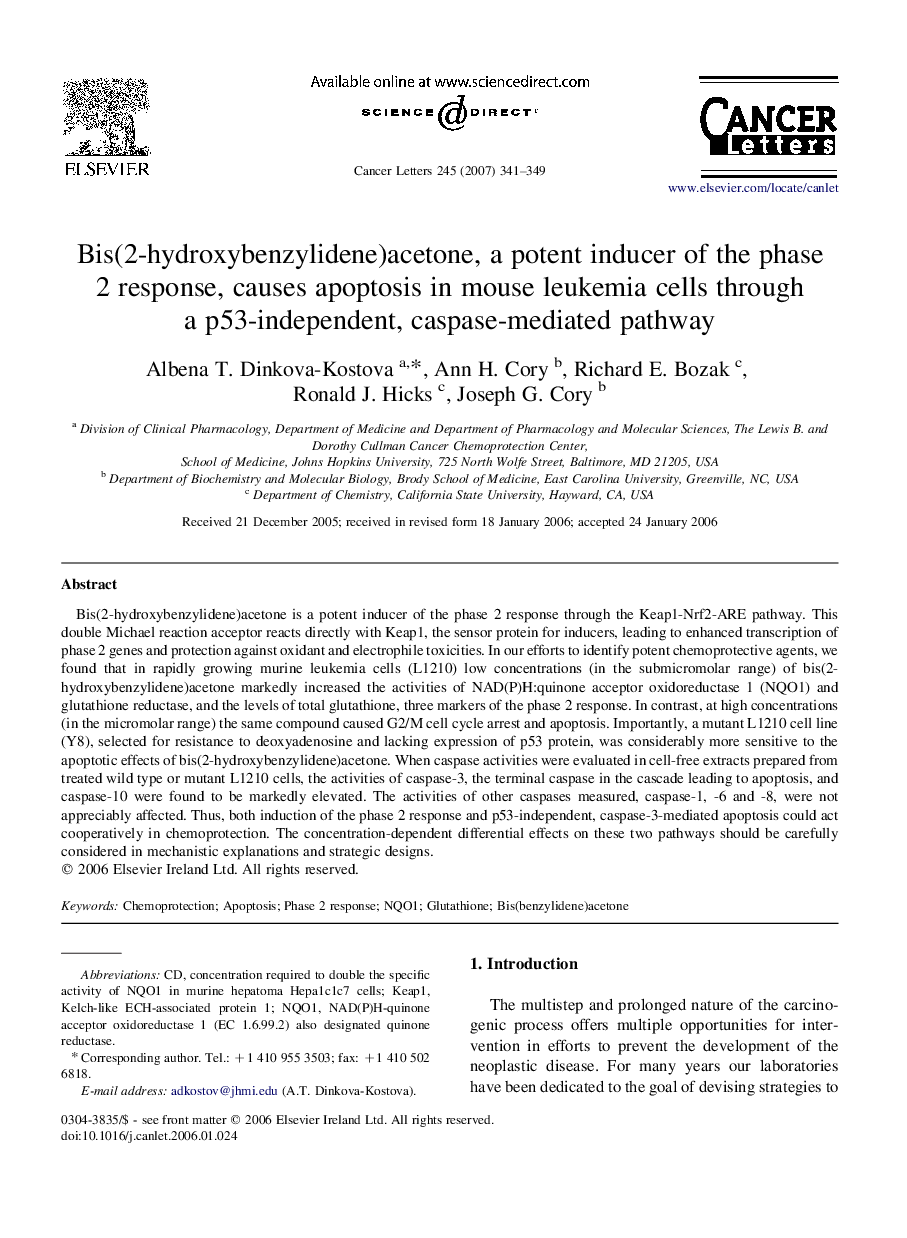| کد مقاله | کد نشریه | سال انتشار | مقاله انگلیسی | نسخه تمام متن |
|---|---|---|---|---|
| 2115461 | 1546703 | 2007 | 9 صفحه PDF | دانلود رایگان |

Bis(2-hydroxybenzylidene)acetone is a potent inducer of the phase 2 response through the Keap1-Nrf2-ARE pathway. This double Michael reaction acceptor reacts directly with Keap1, the sensor protein for inducers, leading to enhanced transcription of phase 2 genes and protection against oxidant and electrophile toxicities. In our efforts to identify potent chemoprotective agents, we found that in rapidly growing murine leukemia cells (L1210) low concentrations (in the submicromolar range) of bis(2-hydroxybenzylidene)acetone markedly increased the activities of NAD(P)H:quinone acceptor oxidoreductase 1 (NQO1) and glutathione reductase, and the levels of total glutathione, three markers of the phase 2 response. In contrast, at high concentrations (in the micromolar range) the same compound caused G2/M cell cycle arrest and apoptosis. Importantly, a mutant L1210 cell line (Y8), selected for resistance to deoxyadenosine and lacking expression of p53 protein, was considerably more sensitive to the apoptotic effects of bis(2-hydroxybenzylidene)acetone. When caspase activities were evaluated in cell-free extracts prepared from treated wild type or mutant L1210 cells, the activities of caspase-3, the terminal caspase in the cascade leading to apoptosis, and caspase-10 were found to be markedly elevated. The activities of other caspases measured, caspase-1, -6 and -8, were not appreciably affected. Thus, both induction of the phase 2 response and p53-independent, caspase-3-mediated apoptosis could act cooperatively in chemoprotection. The concentration-dependent differential effects on these two pathways should be carefully considered in mechanistic explanations and strategic designs.
Journal: Cancer Letters - Volume 245, Issues 1–2, 8 January 2007, Pages 341–349